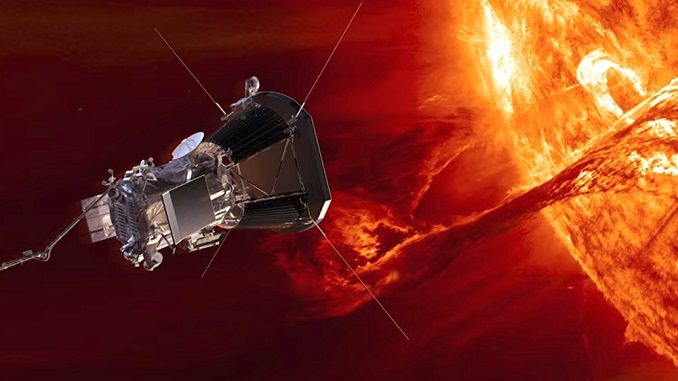
NASA engineers are in the final stages of constructing a spacecraft that will help us understand the main source of energy for our planet, the sun.
According to Space, 500 kilometers from the sun’s visible surface, coronal temperatures can reach a few million degrees. This heat makes the sun to be the most hostile world to study.
If NASA wants its mission to the sun to be a success, engineers need to add protection to the spacecraft in order to prevent it to be scorched.
NASA officials said that engineers added a heat shield eight feet in diameter to the Parker Solar Probe spacecraft on June 27 in order to keep the instruments at the “relatively comfortable temperature” of 85 degrees Fahrenheit (29.4 degrees Celsius).
The Parker Probe is scheduled to launch in August 2018.
The mission is to meant to help us understand how the sun directly affects life on Earth, according to NASA officials.
The Johns Hopkins Applied Physics Laboratory designed and built the probe. They will be also managing the mission, as well as operate the spacecraft.
The extraordinary thing about this is that no human-made object has ever gone as close to the sun as this mission plans to go, and if the Parker Solar Probe succeeds, it will travel to within 4 million miles (6.4 million kilometers) of the sun’s blazing surface, where temperatures reach 2,500 degrees F (1,371 degrees C), NASA officials said in the statement. The Thermal Protection System (heat shield) is made of a 4.5-inch-thick carbon foam core that is 97 percent air and extremely lightweight.
It’s positioned between two panels of the superheated carbon-carbon composite.
Also, the side of the heat shield that will be facing the sun is covered with a special coating which reflects the star’s energy away from the spacecraft.
NASA also explained why the spacecraft needs to be lightweight.
“Because Parker Solar Probe travels so fast — 430,000 miles per hour [692,018 km/h per hour] at its closest approach to the sun, fast enough to travel from Philadelphia to Washington, D.C., in about 1 second — the shield and spacecraft have to be light to achieve the needed orbit,” NASA officials said in the statement.




Be the first to comment